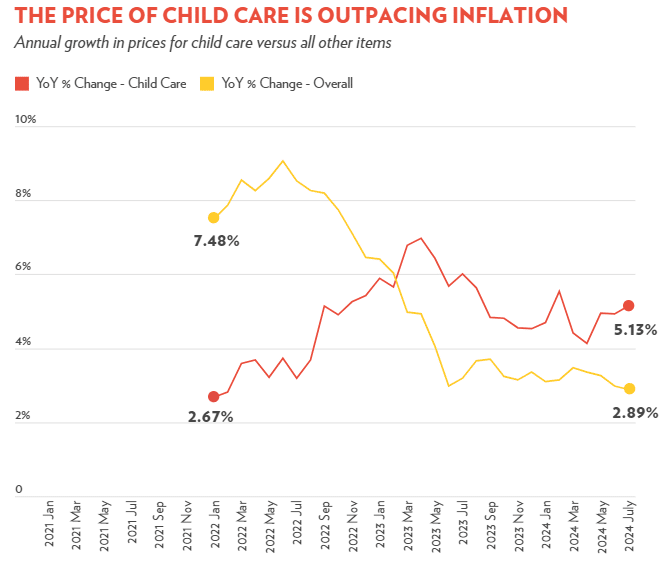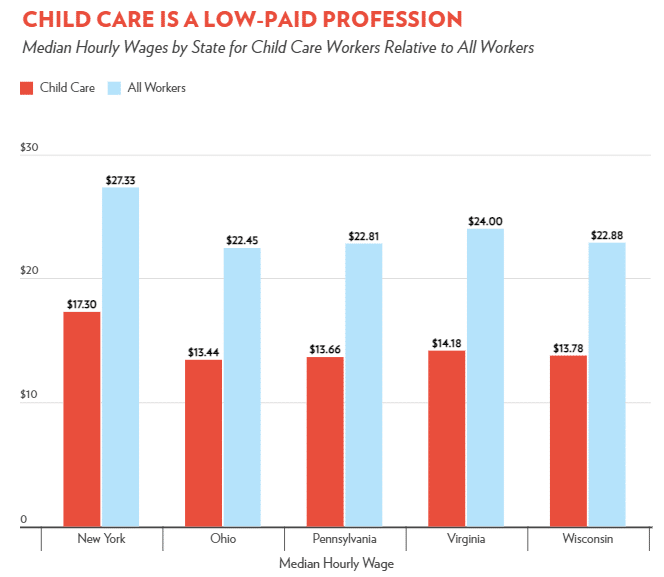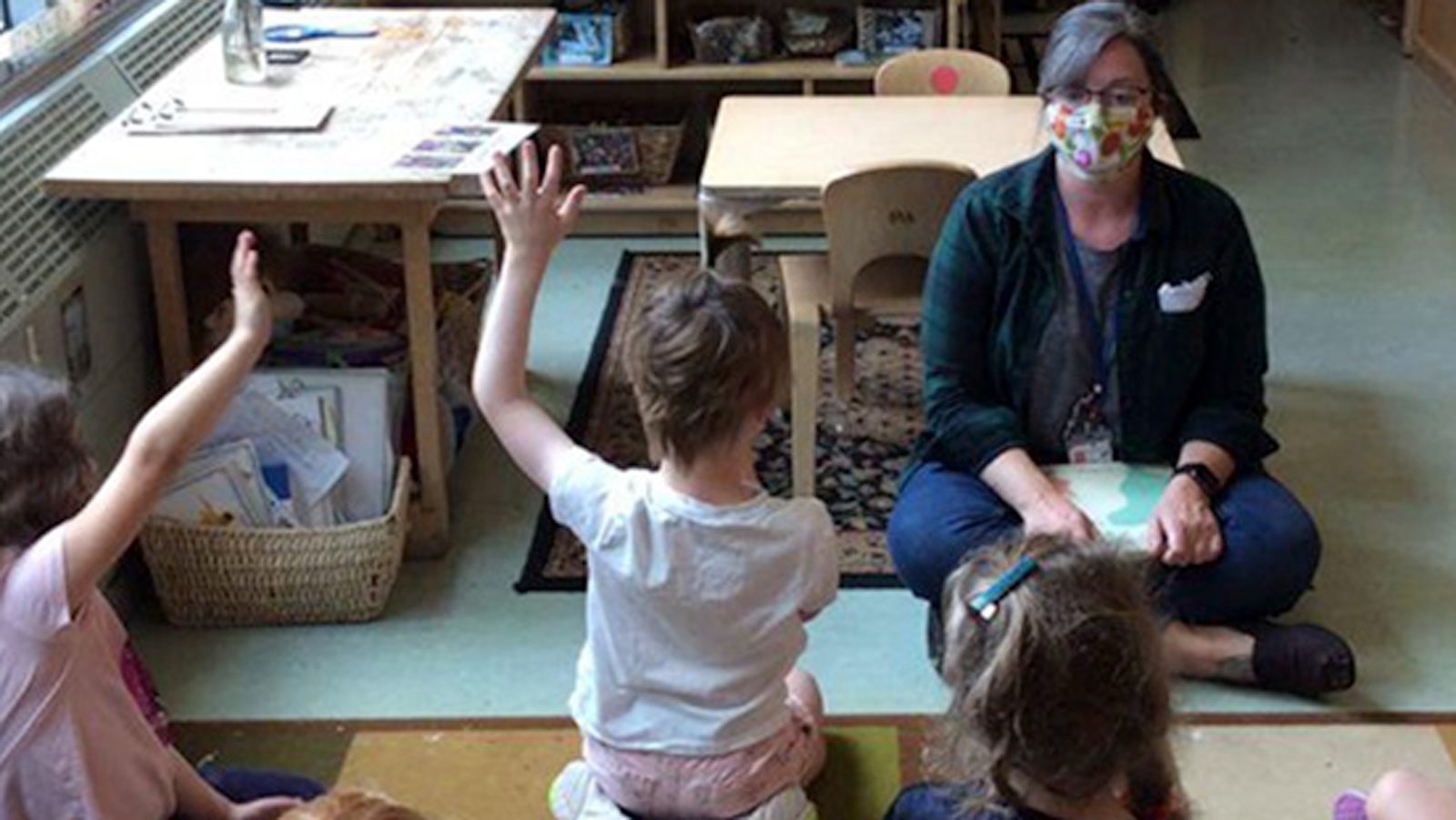Why is child care so expensive?
Parents should be able to work and do the things they need to do to create a better life for their families. So why is the high-quality child care that babies need so expensive?

Here are the top three reasons behind the high cost of child care for infants and toddlers.
1. Staff-to-child ratios
One of the primary reasons why child care is so expensive is that babies and toddlers need the attention of focused and nurturing staff who have adequate time to develop true familiarity with children. This requires low staff: child ratios, ideally 1:4 or fewer. That ratio ensures that each child receives adequate attention and care, but they also mean that providers need to hire more staff.
Labor is the primary portion of any child care program‘s budget and early childhood educators deserve a living wage and benefits like sick leave and vacation and health insurance. However, the reality of the system is that they often do not get those benefits because it often means raising prices even higher.
As business owners, we can't afford to lower tuition without lowering wages for our staff. Our children and teachers deserve more.
Jenny, AR

Jenny is an early childhood educator who started her business as a way to provide quality care to her young children and to others. She and her husband will meet with Members of Congress during Strolling Thunder to share their story.
2. Operational Costs
Beyond paying staff salaries, operational costs include rent or mortgage payments for the space, utilities, insurance, food, and supplies for daily activities. Maintaining a safe and stimulating environment for babies and toddlers is essential.
High-quality child care providers often invest in their staff through training and professional development to ensure they meet the developmental needs of children. The investment in qualified staff ensures children are in a nurturing and educational environment, but it also means higher costs can get passed on to families.
In my area, high-quality child care is slim to none. If you do find an opening at a high-quality center, the cost is extremely difficult for a family of two working adults.
Mariah, wv

After trouble finding care for her children, Mariah and her husband opened their own center. Their goal is for all young children to have affordable, accessible, quality child care without requiring a parent to leave the workforce.
3. Limited Public Funding
Unlike primary and secondary education, which is largely funded by the government, child care services do not receive the same level of financial support. With limited public funding for child care, costs are balanced on the backs of families and underpaid providers. In the end, at a time when they are exceedingly sensitive to the stress of the adults around them, babies lose.
I want Members of Congress to know that many families like ours have two caregivers who are gainfully employed and still find it extremely difficult to afford child care and face real hardship.
Miriam, CT

Maverick’s mom, Miriam, works in human and mental health services. Even with a tuition discount through her employer, the high cost of care means they have little money left over for things other than the basics.
Eye-Opening Data from The Century Foundation

As prices increase, child care becomes increasingly unaffordable for low- and middle-income families. Nationally, families using paid care on average have an income that is $53,000 higher than families not using paid care for young children.

Higher wages aren’t just necessary for keeping up or exceeding inflation. Early educators need higher wages that reflect the value of their work.


